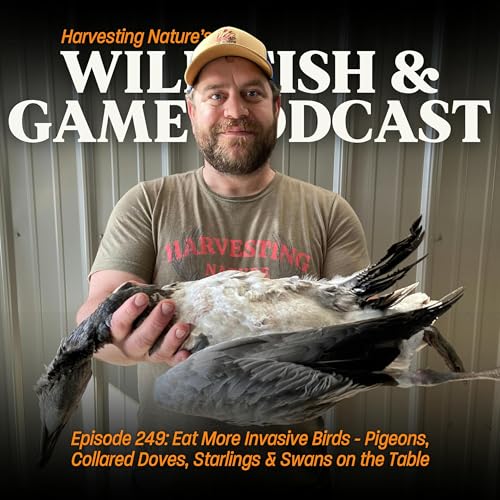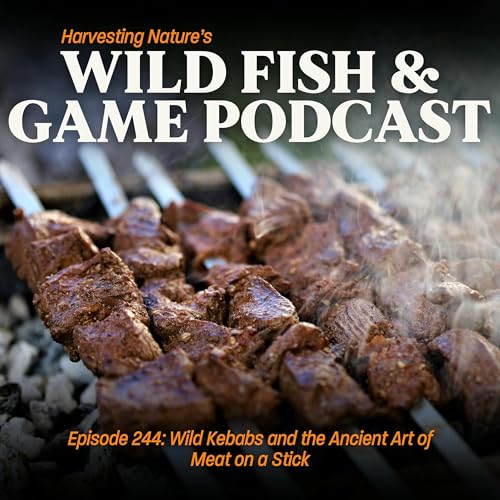Summary: In this engaging conversation, Justin Townsend, Adam Berkelmans, and Joe Cermele explore the vibrant world of fishing culture, storytelling, and the experiences that shape a fishing writer's journey. They discuss the importance of community, the role of food in fishing adventures, and the humorous misadventures that often accompany fishing trips. The conversation culminates in a fun game of 'Fish Tale or Fish Fail,' testing their knowledge of fishing-related facts and stories. In this engaging conversation, Joe Cermele and Justin Townsend explore various aspects of fishing, from trivia about unique fish species to personal anecdotes about family fishing adventures. They discuss favorite fish to catch and eat, the joys of foraging, and the importance of gear while sharing humorous stories and insights. The conversation wraps up with thoughts on future projects and the significance of enjoying the fishing experience without superstitions. - Leave a Review of the Podcast - Buy our Wild Fish and Game Spices The Art of Venison Sausage Making Guest: Instagram Cut & Retie Podcast Takeaways: Fishing stories often focus on experiences rather than the catch. Self-deprecation and calamities make fishing stories relatable. Fishing culture includes everyone, from casual anglers to seasoned pros. The essence of fishing lies in the community and shared experiences. Food plays a significant role in fishing culture, often overshadowing the catch. Writing about mundane fishing trips can be just as impactful as grand adventures. Building in time to explore local culture enhances fishing trips. Fishing is about the journey, not just the destination. Catch and release is a valid practice in fishing, unlike hunting. Snakehead fish can survive out of water for days. The sarcastic fringe head is a unique and aggressive fish. Dried cod heads are a common snack in Norway, but not commonly chewed. Joe's favorite fish to catch is whatever he's currently fishing for. Toe-tog, or blackfish, is one of Joe's favorite fish to eat. Family fishing adventures create lasting memories. Stinging nettle can be a nutritious addition to fish dishes. Avoid making fishing gear lucky to prevent loss and disappointment. Joe is a forager first, angler third, enjoying the outdoors. Joe is always looking for new projects and opportunities in fishing. Chapters: 00:00 Introduction to Fishing Culture and Storytelling 02:52 The Journey of a Fishing Writer 05:55 Memorable Fishing Experiences and Misadventures 08:51 The Essence of Fishing Stories 11:41 The Role of Food in Fishing Culture 14:45 Catch and Release vs. Harvesting Fish 17:47 The Community of Fishing Culture 26:18 Exploring the Local Culture During Outdoor Trips 30:13 Fishtail or Fish Fail: A Fun Game of Fishing Facts 40:42 Favorite Fish: Catching vs. Eating Preferences 44:19 Adventurous Eating: Kids and Their Culinary Preferences 48:46 Foraging Adventures: Discovering Nature's Bounty 51:36 The Stinging Nettle: Nature's Spa Treatment 56:52 Superstitions and Gear Confessions in Fishing 59:19 Future Projects and Podcasting Journeys Keywords: Fishing culture, storytelling, fishing experiences, fishing misadventures, food in fishing, fishing community, fishing stories, fishing writer, fishing podcast, fishing game, fishing, fish trivia, unique fish species, family fishing, foraging, fishing gear, fishing adventures, fishing podcasts, fishing tips, fishing stories Learn more about your ad choices. Visit megaphone.fm/adchoices
Show More
Show Less
 54 mins
54 mins Oct 7 20251 hr and 2 mins
Oct 7 20251 hr and 2 mins 56 mins
56 mins 56 mins
56 mins 58 mins
58 mins 52 mins
52 mins 56 mins
56 mins Jul 15 20251 hr and 5 mins
Jul 15 20251 hr and 5 mins

